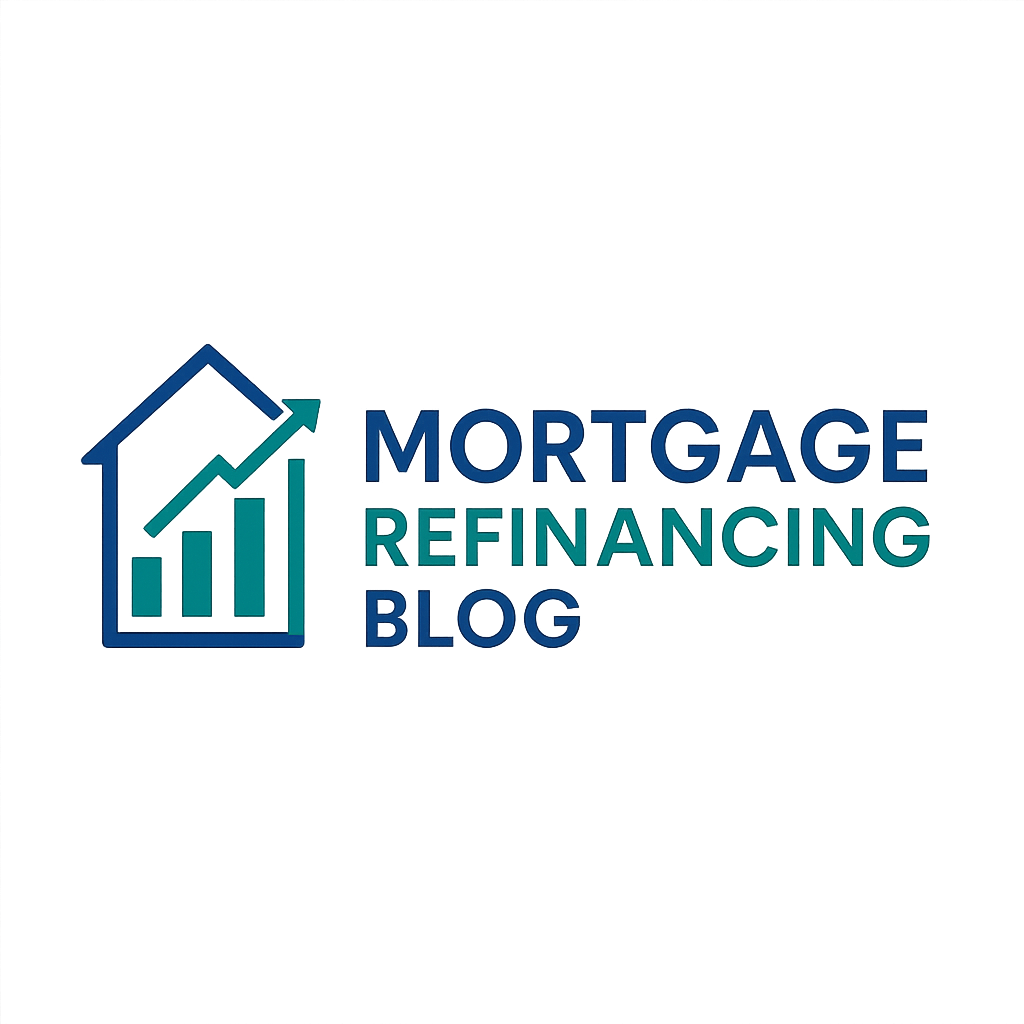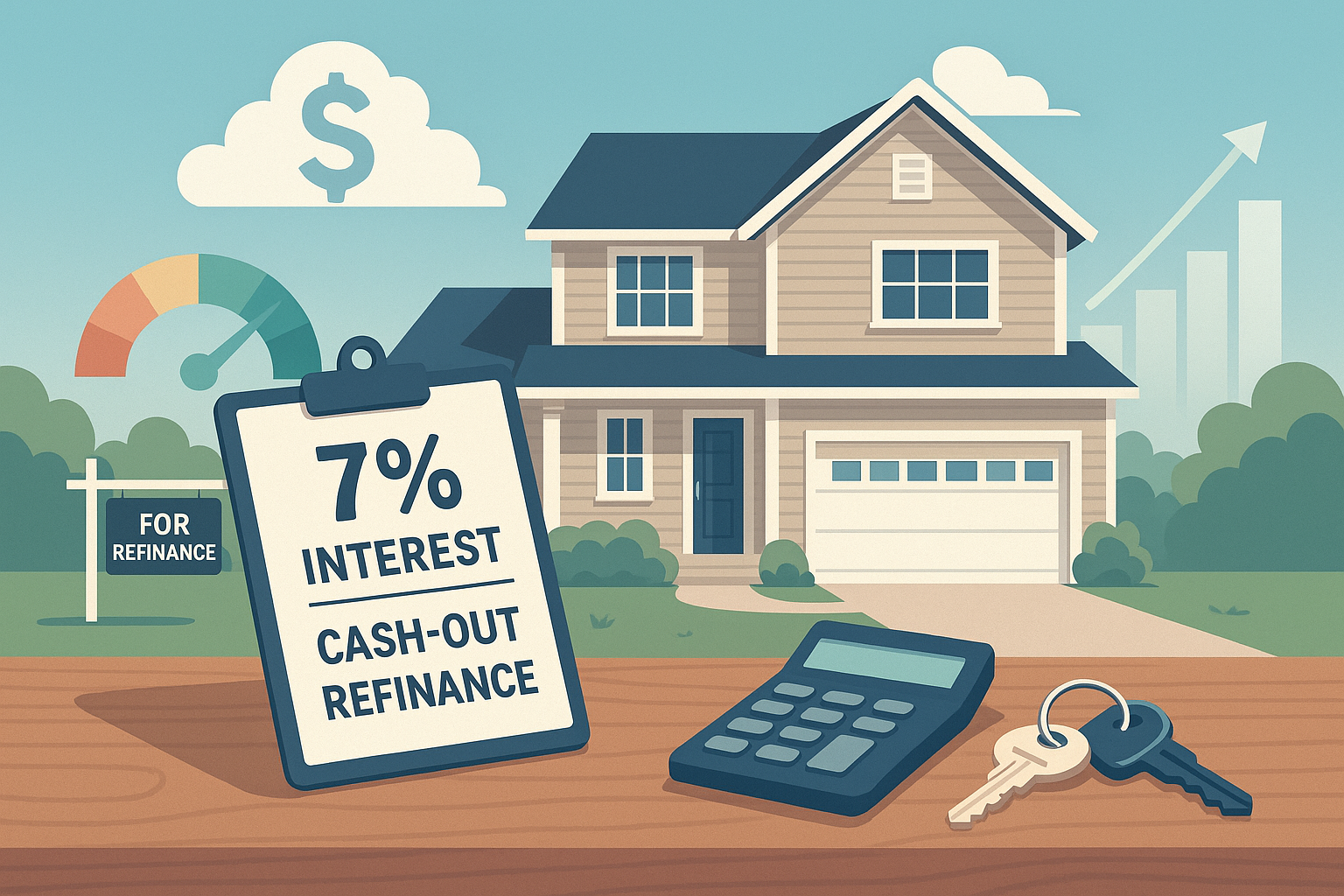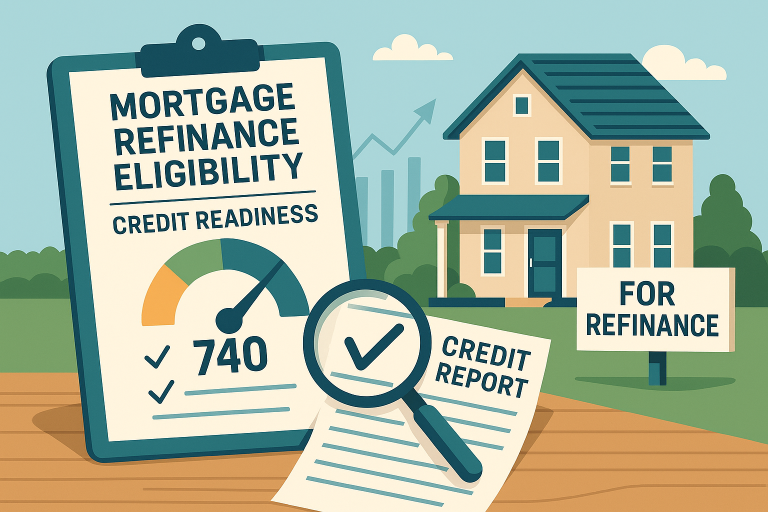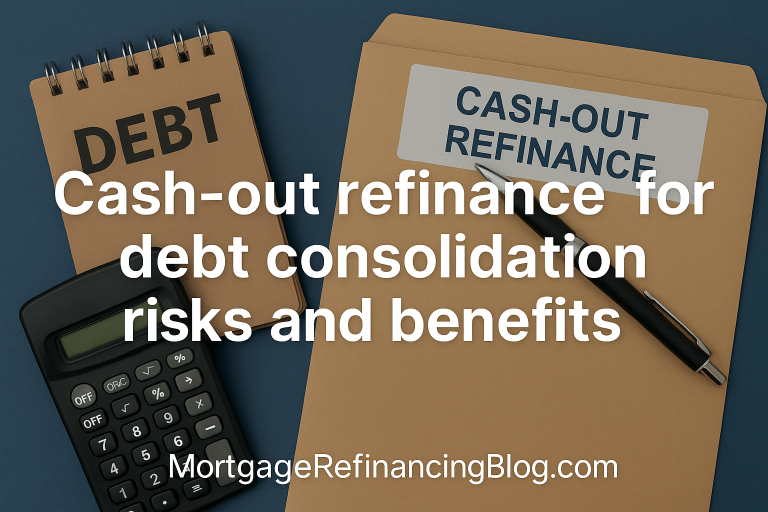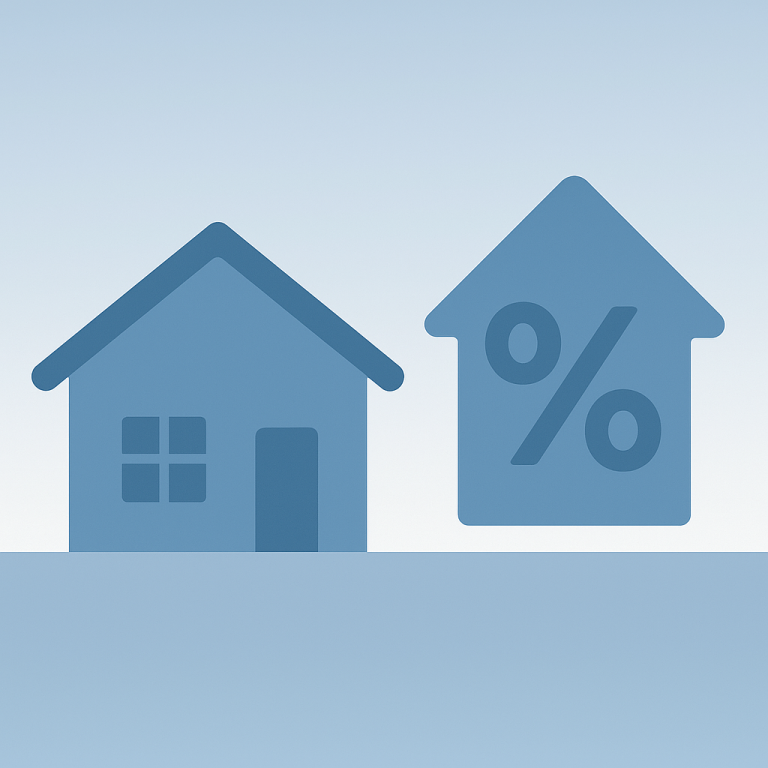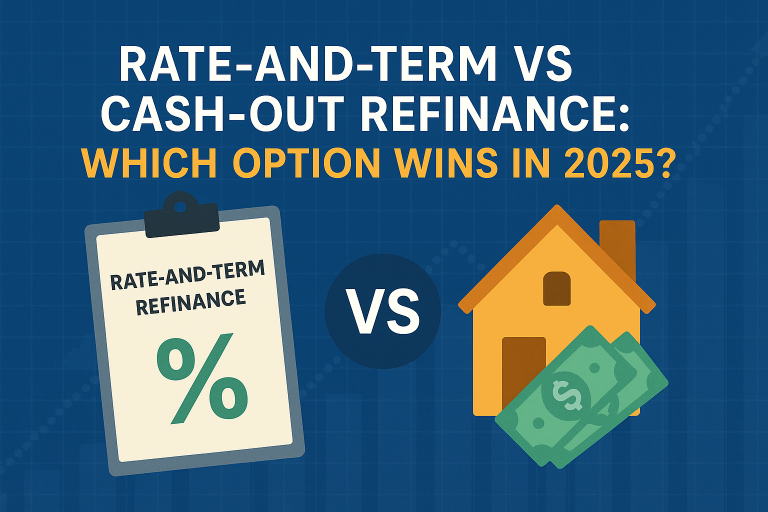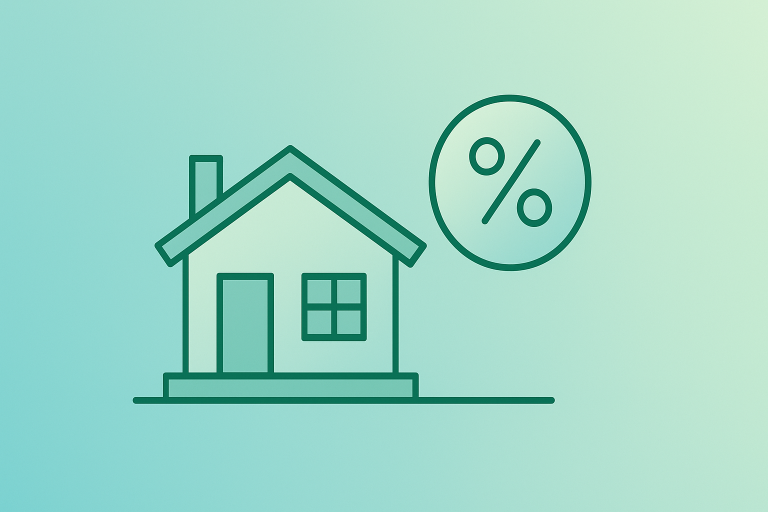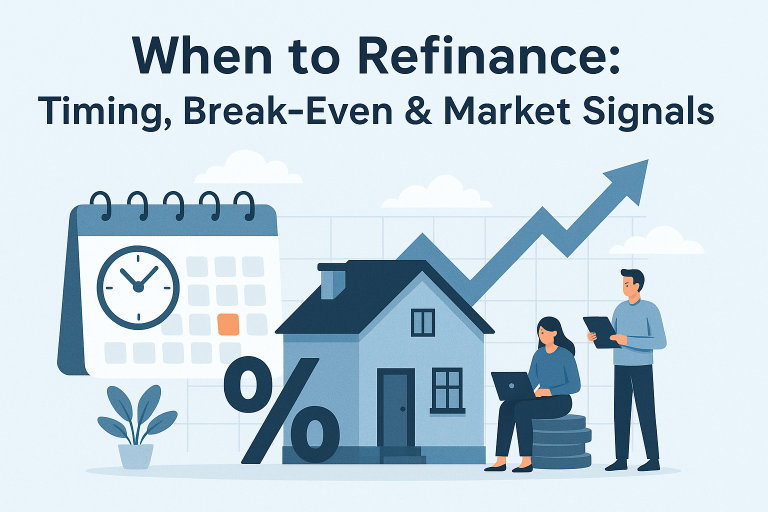Cash-Out Refinance 2025: Your Complete Guide to Tapping Home Equity
TL;DR
Cash-out refinancing in 2025 offers homeowners access to home equity with rates above 7%. Requires 20%+ equity, 620+ credit score, and careful consideration of higher rates vs. home equity alternatives.
What Is a Cash-Out Refinance in 2025?
A cash-out refinance allows homeowners to replace their existing mortgage with a larger loan, taking the difference in cash. With mortgage rates hovering above 7% in 2025, this strategy has evolved from the rate-reduction focused refinancing of previous years to primarily an equity-access tool.
According to Bankrate, cash-out refinance rates are currently hanging above the 7-percent mark, making them higher than traditional rate-and-term refinances due to increased lender risk.
2025 Market Conditions and Rate Environment
The refinancing landscape in 2025 presents unique challenges and opportunities:
- Current Rates: Cash-out refinance rates are trending above 7%, with some lenders offering rates in the 7.06% to 7.11% range
- Market Trends: The Mortgage Reports indicates that cash-out refinance rates have been trending downward in 2025, driven by broader economic shifts
- Rate Forecasts: Experts predict gradual rate declines throughout 2025, with potential stabilization in the mid-6% range by year-end
Why Cash-Out Refinancing Is Popular in 2025
Despite higher rates, cash-out refinancing remains attractive because:
- Home values have increased significantly, creating substantial equity
- Traditional rate-and-term refinancing offers limited benefits with current rate environment
- Homeowners need access to cash for home improvements, debt consolidation, or investments
Cash-Out Refinance Requirements in 2025
Lenders have maintained strict qualification standards for cash-out refinancing:
Credit Score Requirements
- Minimum: 620 credit score for most conventional loans
- FHA Cash-Out: 600 credit score minimum
- Optimal: 740+ for best rates and terms
Equity Requirements
Most lenders require substantial home equity:
- Minimum Equity: 20% remaining after refinance
- Maximum LTV: 80% loan-to-value ratio for conventional loans
- High-LTV Options: Some programs allow up to 95% LTV with additional requirements
Income and Debt Requirements
- Debt-to-Income Ratio: Maximum 43% DTI for most programs
- Employment Verification: Stable income history required
- Cash Reserves: 2-6 months of mortgage payments recommended
Key Benefits of Cash-Out Refinancing
💡 Key Takeaways:
- Access Large Amounts: Borrow up to 80% of home value minus existing mortgage
- Lower Interest Rates: Typically lower than credit cards or personal loans
- Tax Advantages: Interest may be deductible if used for home improvements
- Single Payment: Consolidate high-interest debt into one mortgage payment
- Fixed Terms: Predictable payments with fixed-rate options
Risks and Considerations
Cash-out refinancing isn’t without risks, especially in 2025’s rate environment:
Higher Monthly Payments
With rates above 7%, your new mortgage payment will likely be significantly higher than your current payment, even if you had a higher rate originally.
Closing Costs
Expect closing costs of 2-5% of the new loan amount, including:
- Appraisal fees ($500-$800)
- Title insurance
- Origination fees
- Attorney fees
Reduced Home Equity
You’re essentially converting home equity back into debt, reducing your ownership stake in the property.
Alternatives to Cash-Out Refinancing in 2025
Given current rate conditions, consider these alternatives:
Home Equity Line of Credit (HELOC)
- Lower initial rates (often variable)
- Access funds as needed
- Interest-only payment options
Home Equity Loan
- Fixed rates typically lower than cash-out refinance
- Keep existing mortgage intact
- Separate monthly payment
Personal Loans
- No home equity required
- Faster approval process
- Higher rates but shorter terms
How to Maximize Your Cash-Out Refinance
If you decide to proceed with cash-out refinancing in 2025:
- Shop Multiple Lenders: Rates can vary significantly between lenders
- Improve Your Credit: Even small credit score improvements can save thousands
- Consider Timing: Monitor rate trends and economic indicators
- Plan Your Use of Funds: Have a clear strategy for the cash proceeds
The Bottom Line on Cash-Out Refinancing in 2025
Cash-out refinancing in 2025 requires careful consideration of the current high-rate environment. While rates above 7% make this strategy more expensive than in previous years, it remains a viable option for homeowners with significant equity who need access to large amounts of cash.
The key is understanding whether the benefits outweigh the costs in your specific situation. Consider alternatives like HELOCs or home equity loans, which may offer more favorable terms in today’s market.
Frequently Asked Questions
Q: Is it worth doing a cash-out refinance with rates above 7%?
A: It depends on your current mortgage rate and cash needs. If your existing rate is below 5%, a cash-out refinance may not be cost-effective. However, if you need substantial cash and your current rate is already high, it could make sense. Compare the total cost with alternatives like HELOCs or home equity loans.
Q: How much cash can I get from a cash-out refinance in 2025?
A: Most lenders allow you to borrow up to 80% of your home’s current value, minus your existing mortgage balance. For example, if your home is worth $400,000 and you owe $200,000, you could potentially access up to $120,000 in cash (80% of $400,000 = $320,000, minus $200,000 existing mortgage).
Q: What’s the difference between a cash-out refinance and a HELOC in 2025?
A: A cash-out refinance replaces your entire mortgage with a new, larger loan at current rates (7%+), giving you cash upfront. A HELOC is a separate credit line secured by your home equity, typically with variable rates starting lower than cash-out refinance rates. HELOCs allow you to draw funds as needed, while cash-out refinancing provides a lump sum immediately.
